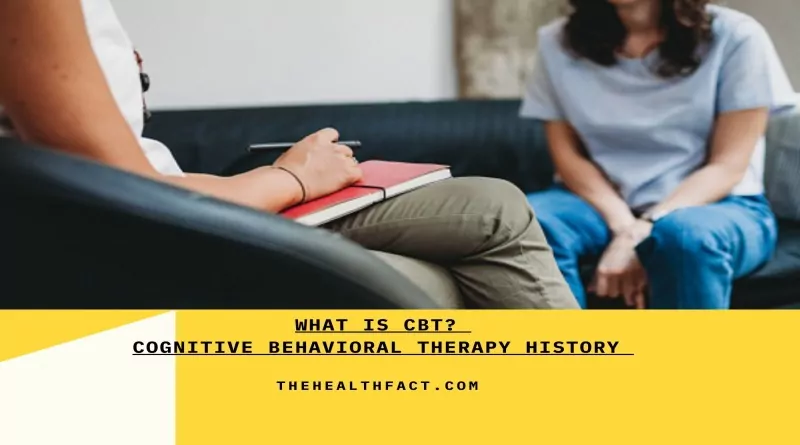The therapy common nowadays for any of the mental illnesses like anxiety, depression or other related disorders is what we know as cognitive behavioral therapy. But not everyone would know about cognitive behavioral therapy history and its importance. Every therapy or treatment comes after lengthy research and discoveries. We will discuss the beginning of this therapy and its significance.
What Is Cognitive Behavioral Therapy?
Cognitive behavioral therapy is an umbrella term used for various approaches. It’s not about a single approach only. It is a psychotherapy used to eradicate the irrelevant beliefs, negative emotions, and worries of people about self or world by changing their viewpoints and belief system.
CBT treatment allows the elimination of destructive thoughts of oneself and gets them out of mental blockage caused by anxiety, depression, etc. The negative thoughts can be deleted from the mind by identifying and replacing them with more realistic and productive thinking.
Now let’s move to the cognitive behavioral therapy history. Let me tell you that this therapy is a combination of cognitive and behavioral therapy and has two different roots.
Cognitive Behavioral Therapy History
Beginning of behavioral therapy
The approach of behavioral therapy came in the early 1900s during the second world war. In the 1940s the first wave of behavioral therapy began in response to the emotional issues faced by many war veterans that had returned from the war.
Behaviourism is the idea of changing, modifying, or even changing behaviors. If we see simply, then our behaviors are our response to the environmental stimuli that form our behavior. Before behavioral therapy came into knowledge, psychoanalysis was popular at that time.
Psychoanalysis is a combination of theories and therapeutic methods to work on the subconscious thinking of the person’s mind and by changing them.
But this challenged psychotherapy as it was a lengthy procedure and was known as the first wave of CBT. The need for an effective treatment for anxiety and depression clashed with the build-up of behavioral research viewing how people behave or react to life situations emotionally.
Beginning of cognitive therapy
Cognitive therapy came in the early 1900s by Austrian psychotherapist Alfred Adler’s belief of unpleasantness and basic mistakes made him the primary therapist to highlight cognition in psychotherapy. Alfred inspired American psychologist Albert Ellis to evolve rational emotive behavior therapy( REBT). It is known as the earliest form of cognitive psychotherapy. The approach of this therapy was based on the idea that a person’s emotional distress is the response of their thoughts and not from the actual event.
During the 1950s and 1960s, American psychiatrist Aron T. Beck observed that their clients have internal self-talk and thoughts running in their minds during sessions. He observed the clients talking to themselves, and shared only a small part of thinking with him. تنزيل العاب اون لاين You can call it hesitation or a sense of fear, what would my therapist think of me?
This is what is called the automatic response, which links thoughts with feelings. Let’s understand in detail.
Automatic thoughts
Beck understood it so far that somehow thoughts and emotions are interlinked and create an automatic response in the mind which he termed as “automatic thoughts”. Also, the person might not know about this loop of thoughts until told by his therapist. Beck understands that people can learn to identify their thoughts and counter them.
He observed that even the most negative thoughts can be modified into positive by simply changing the way they think. CBT helps in neutralizing the automatic thoughts of other thoughts.
In the 1960s many experimental studies have shown how cognition affects behaviors and emotions. This is what is called the cognition revolution. It spotlights the role of conscious thinking in psychotherapy and is considered the second wave of CBT.
But only one approach was not found sufficient to cure depression and panic disorders of anxiety. A need of merging the different approaches was felt by the psychotherapist.
Merging the two approaches
Although, behavioral therapies were successful in treating various neurotic disorders, failed in curing depression. When the cognitive therapies were at their high altitudes, psychologists combined the two approaches to successfully treat panic disorders and other neurotic responses. The purpose of the two approaches might not be similar but both are concerned with the person’s mental happenings currently. Cognitive-behavioral therapy emphasizes the client’s beliefs, feelings, and thoughts at the moment.
Application Of Cognitive Behavioral Therapy
Now let’s see in which conditions cognitive behavioral therapy works. Well, CBT has been a part of various experimental studies with the application over a vast range of psychological disorders. It became ubiquitous in the 1990s and was also prompted by the NHS. the increasing popularity makes the evidence base more strengthened. It is remarkable in a wide range of disorders. For example cognitive behavioral therapy for anxiety, depression, panic disorders, etc.
Here are some disorders on which CBT is applied:-
The best part of this therapy is, it can treat more than one issue in the treatment sessions. For example, depression with OCD. It is common to have another associated disorder that develops parallel.
Moreover, for different types of issues, different types of CBTs are applied. For instance dialectical behavior therapy, rational emotive behavior therapy, cognitive processing therapy, and many more.
Conclusion
Cognitive behavioral therapy for anxiety, depression, and many mental disorders is used worldwide. Also, cognitive behavioral therapy history is comprised of two different approaches. Eventually, CBT was the merged form of the two. The smart goals of CBT therapy help in developing an understanding of one’s thoughts and elimination of unnecessary thoughts. It works on the automatic thoughts system and by changing the way of thinking, a sense of consciousness and awareness can be created in the affected individuals.
Frequently Asked Questions:-
Who is the father of cognitive behavioral therapy?
Aaron Temkin Beck was the founder of cognitive behavioral therapy and was born on 18 July 1921.
How was CBT formed?
CBT is the merged form of two different approaches: behaviorism and cognition. The need of adding the two approaches was felt by the psychologist. Cognitive behavioral therapy concludes different techniques and therapies used for curing various mental disorders.
What is the theory of cognitive behavioral therapy?
Cognitive behavioral therapy is a psychological treatment that is practiced worldwide by various therapists. CBT deals with the feelings, thoughts, and behavior of people. What we think and feel affects our behavior, and this is what is observed and treated in this therapy.
What is cognitive behavioral therapy summary?
CBT is a psychological treatment used for treating a range of psychological disorders such as anxiety, depression, and other chronic mental illnesses. ربح المال من الانترنت It includes various methods of behavioral and cognitive therapies.
What are the three components of cognitive behavioral therapy? كيف تلعب القمار
The three main components of cognitive behavioral therapy are cognition therapy, behavioral therapy, and mindfulness techniques and therapies. As a whole, it works on the negative emotions and the behavior that occurs.
What are the disadvantages of cognitive behavioral therapy?
Well, therapy won’t have any disadvantages in general. But for any therapy or treatment, you need to commit yourself to prioritize the sessions with your other work. If you want early and better treatment, you have to give sufficient time to yourself and will have to attend regular sessions.
Can CBT be harmful?
CBT has some harsh sides, while you confront your fears, feelings, emotions, or behaviors. The challenging situations make the person angry, upset, or even cry for a while, but in the long-term they become strong.
Is CBT good for depression?
Yes, CBT therapy is good for treating depression and various other conditions. This is a talk therapy that works more effectively as a medication or better than that. A mild to moderate depression can be treatable with CBT.
What types of disorders are best treated by CBT?
CBT can treat a variety of disorders such as anxiety, depression, bipolar disorder, schizophrenia, eating disorders such as bulimia, and others. Also, there is a wide variety of disorders that CBT can treat.
What is the ABC model of behavior?
ABC model of behavior stands for antecedent, behavior, and consequence. It helps teachers to study what happened before, during, and after a behavior.



